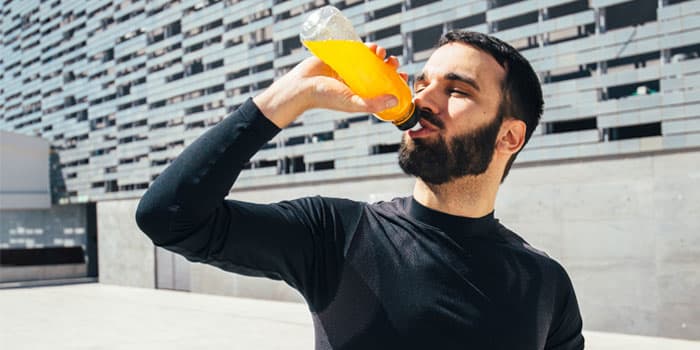Why Are Lemon Energize and Hydrate Bright Yellow?

The thing most people notice when they mix up their first glass of Beachbody Performance Lemon Energize and Hydrate is the Day-Glo yellow color.
Not surprisingly, some folks mistake this neon hue for artificial coloring.
Happily, because we all care about what we put in our bodies — but still want to kick booty — this could be no further from the truth.
That dazzling yellow comes from quercetin, a naturally occurring phytonutrient found in apples, citrus fruits, and onions.
It’s also one of the “magic” (read: scientifically proven) ingredients in Energize and Hydrate intended to bring your performance to the next level.*
There are more than 25,000 phytonutrients — they’re in edible plant foods, including fruits, veggies, nuts, and grains. They serve several biological roles.
Most obviously, they often give fruits and vegetables their distinctive colors.
Lycopene, for example, turns things red, and you’ll find it in tomatoes, watermelon, and pink grapefruit. Cyanidin has a purple hue and you’ll find it in blueberries, blackberries, and açai berries.
Phytonutrients are also, well, nutrients. They help us in a variety of ways, including acting as antioxidants, regulating hormones, and boosting immune function.
Because different phytonutrients do different things, your best bet is to “eat the rainbow” when it comes to fruits and vegetables.
If you think about it, the connection between colors and nutrient value is logical.
The bright colors attract animals that eat the fruit. Their waste distributes and fertilizes the seeds of the plants, causing more plants — and fruit — to grow.
Meanwhile, these animals reap the benefits of the nutrients, causing them to have healthier offspring, which in turn eat more fruits and veggies, spreading more seeds.
Circle of Life, baby.
Quercetin is no exception when it comes to nutrient value, even if modern plumbing has served up a raw deal for the plants in this relationship.
This phytonutrient, which falls under the subclass of flavonoids, is sometimes referred to as “the athlete’s phytonutrient” given the strong research showing how it helps reduce exercise-induced inflammation and post-exercise oxidative stress.
It has also been shown to help exercisers push harder for longer.
The reward?
“We can get a lot more work out of our athletes when they have quercetin on board than when they haven’t,” says According to Marcus Elliott, M.D., founder, and director of P3, an elite training center and research lab in Santa Barbara, California. “It isn’t subtle — it’s absolutely clear and profound.”
*These statements have not been evaluated by the Food and Drug Administration. This product is not intended to diagnose, treat, cure, or prevent any disease.
